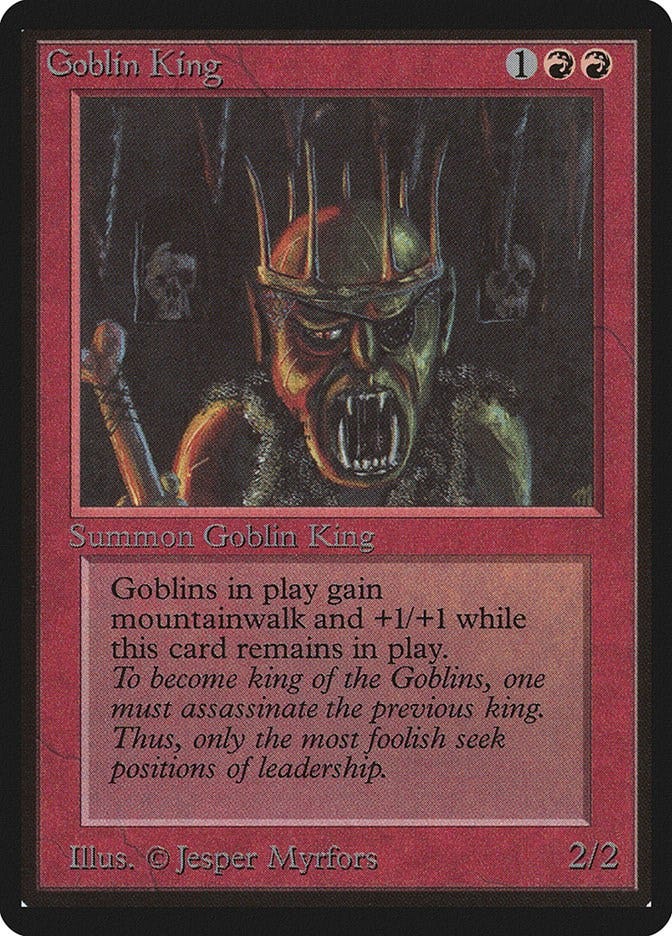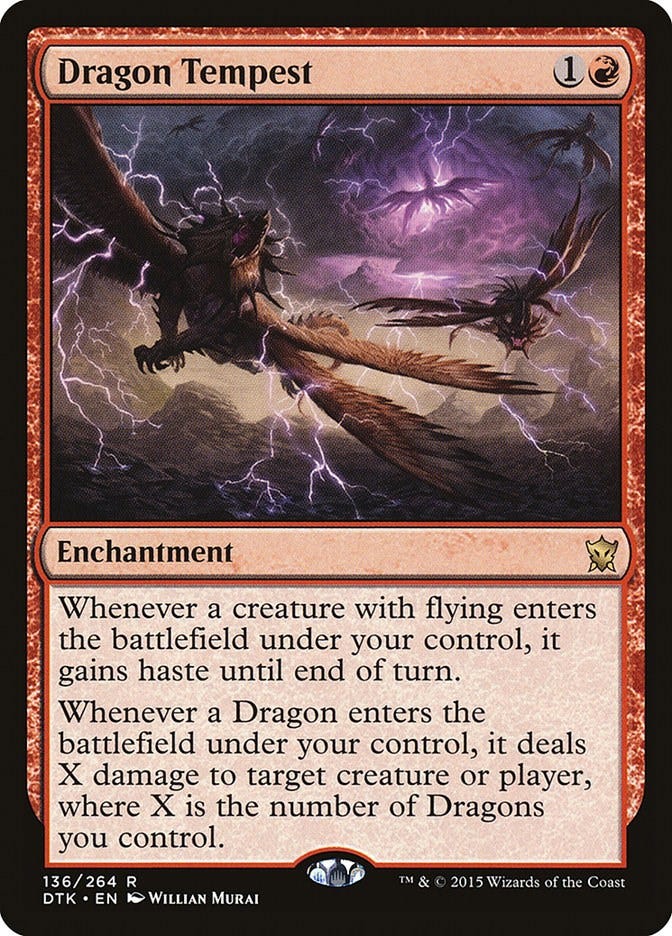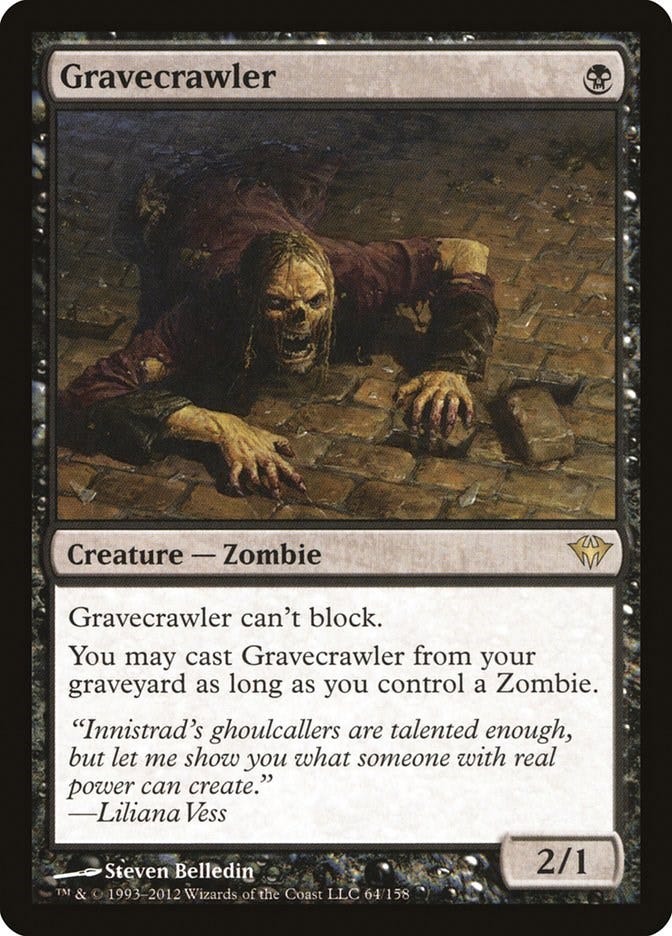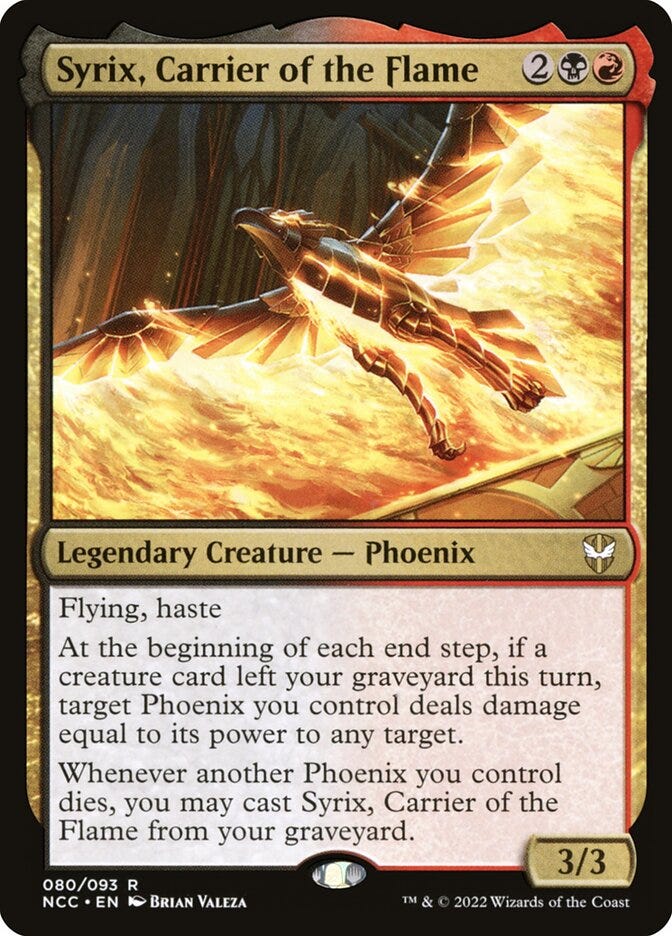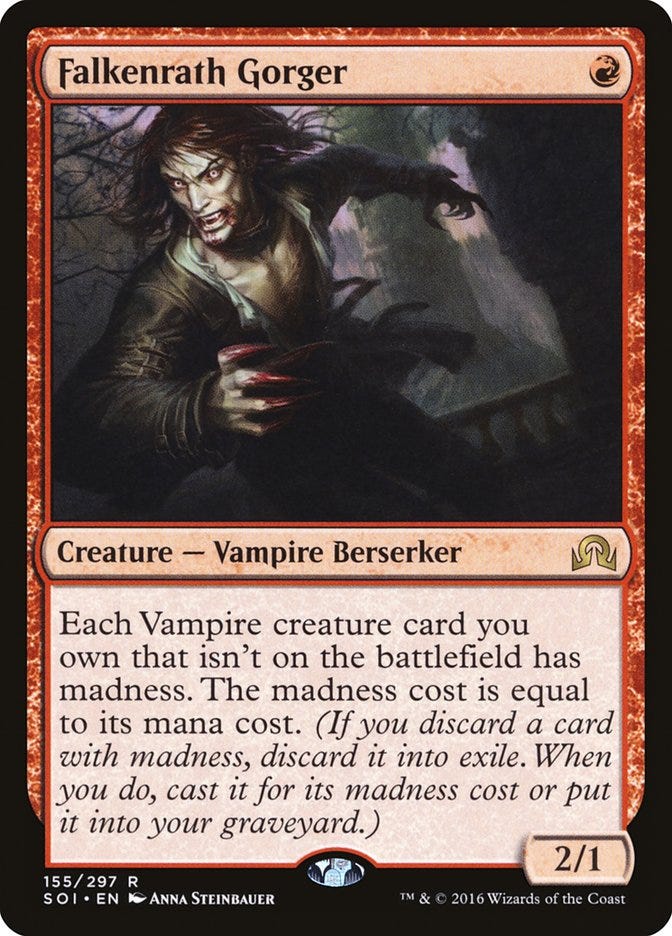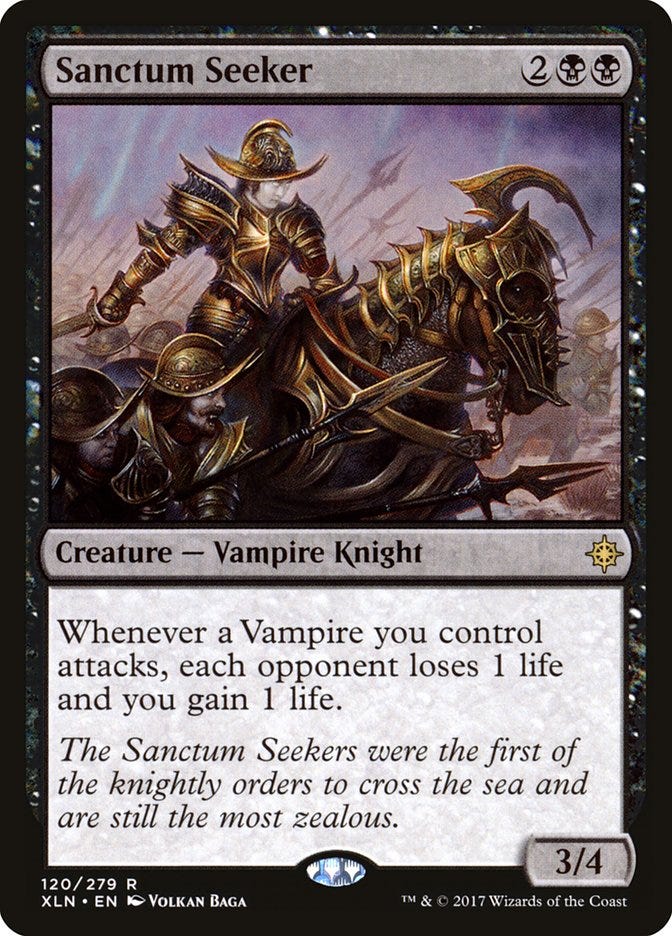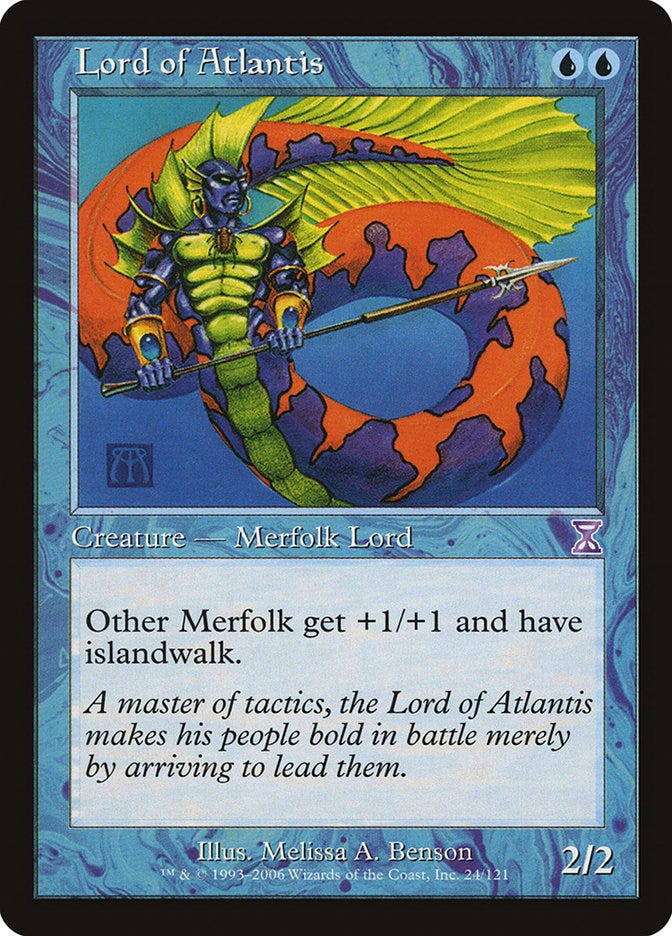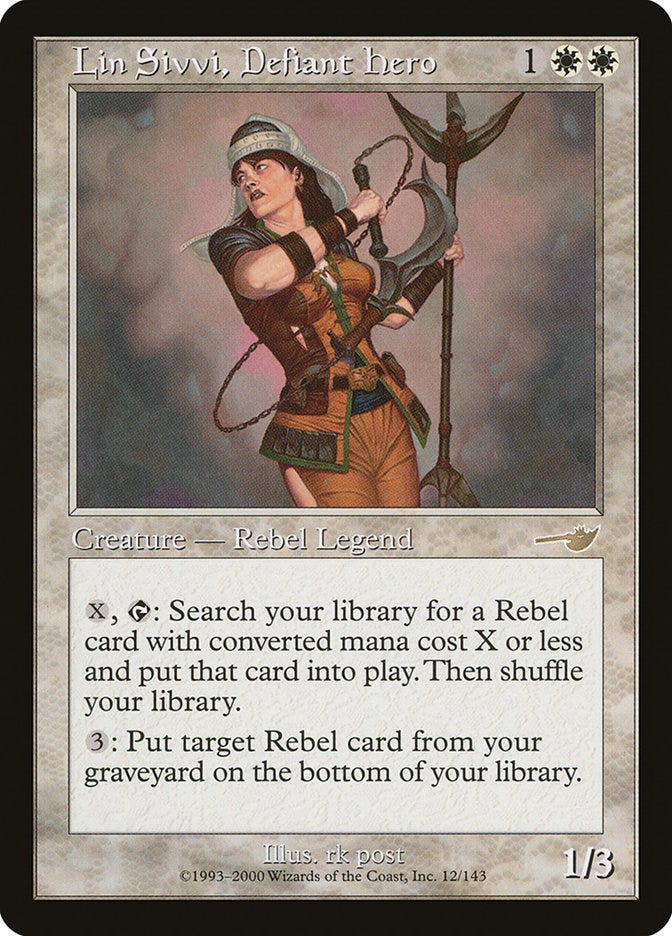Birds of a Feather, Dragons of a Scale
A look at tribal synergies in Magic: The Gathering and why they are so compelling and so important
Magic: The Gathering is a game built on a foundation of player identity and card synergy. From the five colors, the ten guilds of Ravnica, and even the player psychographics, there are plenty of places for players to find a unique identity in their deck building and gameplay choices. This is because the game is built on such a strong marriage of gameplay and aesthetics. Blue and Red may play nicely together, but it is the Izzet League and their mad scientist image that makes people hold up a banner and turn that color combination into part of their identity as a player.
However, perhaps one of the most longstanding ways that Magic creates exciting archetypes for players to get attached to is Tribal synergies.
Tribal is the slang term for the mechanical theme that a set or deck can have centered around a specific creature type. An example of the kinds of abilities a tribal synergy card might have is “Zombies you control get +1/+1,” or “Whenever you cast a Wizard spell, draw a card.” They have been a part of the game for as long as it has existed, starting with Lord of Atlantis and Goblin King in Alpha.
However, tribal mechanics would not reach their first jump in usage until the Onslaught block in 2002, which featured support for many of the game’s iconic tribes, such as goblins and zombies. From here, tribal synergies would only become more and more common, with tribal “Lords” (creatures which give stats or abilities to other creatures of the same type) appearing in many sets following, including sets without strong tribal themes. In Lorwyn block in 2007, Tribal became the forefront of an entire year of sets, including the introduction of an entirely new card type of the same name. In the modern era, players can expect to get new tribal support multiple times a year, and often enough support for tribes that do not yet have it, such as Phoenix Tribal finally receiving support in 2022. Seeing this, it is safe to say that tribal has become a very reliable tool in the eyes of Wizards of the Coast to spark interest in new sets and inspire deck building in players, and it is not hard to see why.
The foremost element of tribal that makes it so compelling is that it presents a strong aesthetic for players. It is well documented that newer players are especially fond of tribal, and it is because the deck building strategy is baked into the idea of an army of one specific creature type. Offer a new player a control deck and they might not fully understand what it means. However, if you offer that same player a dragon tribal deck, they will instantly grok what playing the deck will look like. The player will have an army of dragons, which is instantly more tangible than the nebulous concept of “Control.”
This is because Magic: The Gathering is a high fantasy game built on the same sword and sorcery foundations as Dungeons and Dragons, meaning the game can pull from popular culture imagery to inspire its races and monsters. It is not a coincidence that the most supported creature types in Magic are the ones that are most recognizable to most people, such as Dragons and Angels. By using recognizable fantasy races for the most well-supported creature types, Magic: The Gathering is able to appeal to players looking to fulfill a fun gameplay fantasy by piggybacking on ideas they might already be familiar with.
The tribes are not just aesthetics, however. The most common tribes in Magic also usually have a gameplay thematic separate from just sharing a creature type. For example, elves often produce mana, either by tapping for it or by helping the player find more lands. Similarly, zombies come back from the graveyard often, making them recursive threats. These gameplay synergies help keep the tribes distinct from one another, and also work as a way to further the gameplay fantasies of the tribes. As a result, tribal sets like Innistrad and Ixalan feature diverse gameplay even though the supported synergies of those sets all involve playing a lot of creatures. Some tribes feature aggressive strategies, and others much slower plans. Gameplay distinctions like this contribute heavily to tribal aesthetics as well. Zombies in pop culture are characterized by undeath, and so in Magic, zombie creatures can resist or circumvent death. Goblins in fantasy media are reckless and expendable, so in Magic, they are very easy to create and sacrifice for value. By lining the gameplay of a tribe with its aesthetic, the tribe comes to have a stronger image in the minds of players, and thus becomes a more compelling gameplay option.
However, tribal design is not always perfect, and as Magic The Gathering’s design has changed to support it more, certain problems begin to bubble to the surface.
The first problem is the easiest to fix: some tribes do not have tribal synergy. This is something that can be solved just by printing new cards that have this synergy. As mentioned previously, Phoenixes were a popular creature type that did not have a strong synergy piece until 2022 with Syrix, Carrier of the Flame. New tribal lords come out with enough frequency that this problem may be solved before 2025.
Another problem is that some creature types do not have cohesive gameplay, leading to situations where there are multiple strategies encompassed in a single tribe. This can become a problem when new cards come out with tribal synergy pieces that do not support existing pieces. For example, vampires in Ixalan were focused on life draining and token generation, but the vampires in Shadows over Innistrad block were focused on discarding cards. These themes did not synergize at all, so fans of vampires in Shadows over Innistrad did not have many new vampires to pick up for their existing decks when Ixalan came out.
The final problem is that some tribes have themes which simply aren’t healthy for the game or fun for players. Merfolk have a strong Islandwalk theme, which is a mechanic that has been all but discontinued in Magic for leading to unhealthy and polarizing gameplay experiences. These last two problems are much more difficult to solve, as the answer is not as simple as printing a new card or two.
Both problems have a similar through-line of existing synergies not being adequate to support the tribe on their own. For tribes with many different ideas that seem to compete, this can come as a result of the creature type itself not having a very strong fantasy to design around. Angels are mighty and have wings to fly, but other than that, there is not a very strong gameplay thematic, and so many ideas have been tried throughout the years, from supporting humans to life gain. Similarly, Vampires have been iconic before, only appearing once per set at rare, but have more recently become a common creature type more in line with Goblins and Elves. Vampires have had life draining, discarding, and spell stealing as themes before, and all in the last few years. Because of this, it is very difficult to create vampire synergy cards that support all of these different mechanics, so most vampire synergy pieces are narrowly designed to support whatever vampires happen to be doing at the time.
For tribes with unhealthy mechanics, their problem is one of age, and they restrict future designs. Rebels are a tribe with a very linear game plan of tutoring (searching the deck for) other rebels directly into play. They were first released in 1999 and had a massive impact on competitive Magic for how consistent they were. This design has never been repeated since, and even new rebels to come out do not even touch the tutoring idea that comprised the original theme. This is because with the passage of time, Wizards of the Coast has learned that linear gameplay like this is not interesting or fun for either player.
The rebel mechanics specifically perfectly encapsulates why it is so important to get tribal mechanics and synergies right the first time: once a card is printed, it won't go away unless it is banned. As a rule, Wizards of the Coast does not like to ban cards from play, so cards printed in the future usually have the chance to play with cards printed as long as the game has existed. While this can be an exciting thing, as new cards can uncover entirely new strategies and archetypes, it can also frustrate design, and rebels are a fantastic example. Because the initial rebel mechanic was that they tutored for other rebels of higher mana costs, all creatures with the rebel type printed in the future will be able to be tutored by these initial rebels from Mercadian Masques. This means if rebels come back, they will have this massively problematic group of cards that can support them and lead to more unhealthy gameplay. As such, rebels have never seen print since in a capacity that can synergize with their initial incarnation. The most recent appearance of rebels is in the form of the “For Mirrodin!” equipment that create rebel tokens, and this was designed this way specifically because the Mercadian Masques rebels cannot search them out.
While not all creature types are so far gone that they need to be completely discontinued, many still have these archaic foundations that designers of future tribal support need to be mindful of. The solution to both this problem and the problem of too many mechanics is to simply find a mechanic that works and stick with it. This has come to pass somewhat with merfolk, as they have become more focused on group buffs. If steps like this are taken with other types like Vampires, Angels, and others, the game will become more cohesive overall as the tribes begin to fit more nicely into aesthetic and gameplay niches.
The tribes in Magic: The Gathering are overall a very well designed and executed part of the game. Despite the few inconsistencies, the tribes act as a wonderful piece of flavor and gameplay marriage that makes Magic: The Gathering a more cohesive game, while also making it more accessible to newer players, as the ideas that tribal synergies present do not require a large knowledge-base of the game to be fun and appealing. The blemishes that exist are ones that can for the most part be solved with some tightening-up of future designs with respect to tribal synergies and identities, and they will almost certainly be patched up over time.




